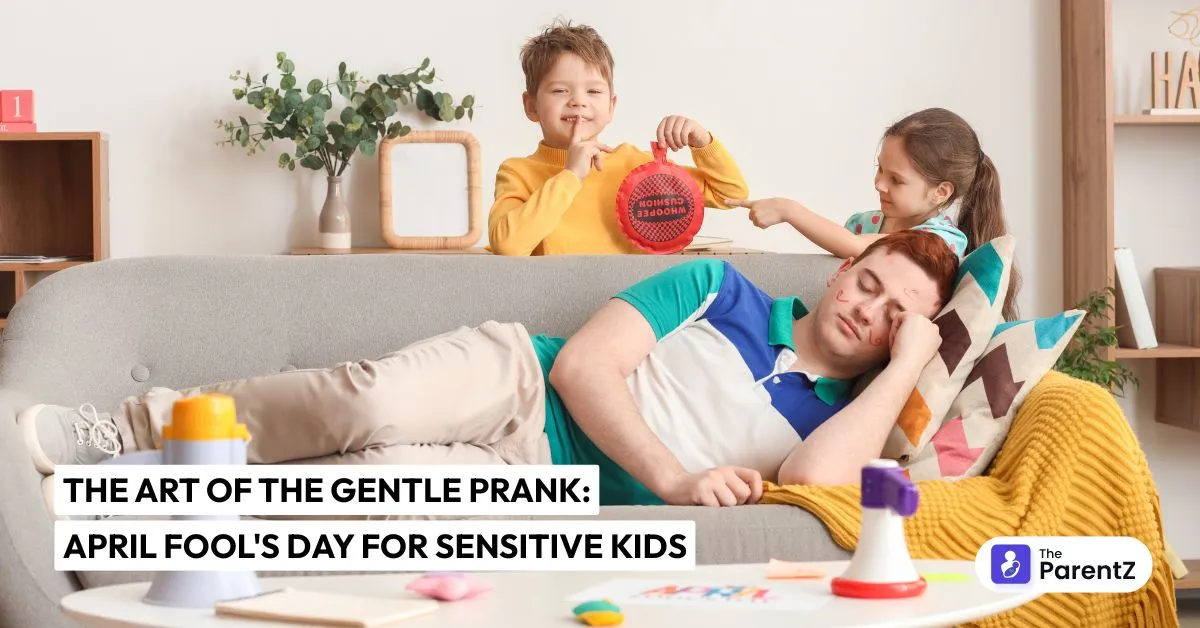April Fool's Day is here, and while many of us giggle at the thought of jumping out from behind doors or serving up salt instead of sugar, not every child experiences these surprises with the same delight. For sensitive kids, traditional pranks can feel overwhelming, scary, or even humiliating. But that doesn't mean they should miss out on the fun!
As a parent, teacher, or caregiver of a sensitive child, you might wonder how to include them in this playful tradition without triggering tears or anxiety. The good news? April Fool's Day can absolutely be a joyful experience for everyone – it just takes a gentler approach.
Understanding Your Sensitive Child
First things first – sensitive kids aren't being "too dramatic" or "overreacting." Their nervous systems are often wired to process sensory information more intensely. What seems like harmless fun to one child might feel genuinely upsetting to another.
Signs your child might be sensitive include:
- Strong emotional responses
- Discomfort with sudden changes or surprises
- Heightened awareness of others' feelings
- Needing time to process new situations
The key is working with these traits rather than trying to "toughen them up," – and April Fool's Day is the perfect opportunity to celebrate their thoughtfulness while still having tons of fun!
Gentle Pranks That Bring Smiles, Not Tears
1. The Backwards Day
Turn everything upside down or backwards! Serve breakfast foods for dinner, wear clothes backwards, or read bedtime stories in the morning. This creates a sense of silly confusion without any element of fear.
2. The Colorful Surprise
Add a drop of food coloring to make blue milk or green orange juice. The look of surprise when they pour it is priceless! Make sure to let them in on the joke right away with an enthusiastic "April Fool's!"
3. Googly Eyes Everywhere
Stick googly eyes on everything in the fridge overnight. When your child opens it in the morning, they'll be greeted by a refrigerator full of "food friends" staring back! This slow-reveal prank gives them time to process the silliness.
4. The Helpful Trickster
Replace their usual snack with a toy version, but have the real snack ready immediately after. The brief moment of confusion followed by relief creates a gentle emotional roller coaster that ends with satisfaction.
5. Stuffed Animal Parade
While they're asleep, arrange all their stuffed animals in a funny scene – maybe having a tea party or watching TV. It's a sweet surprise to wake up to!
6. Brown E’s
Cut several E's from brown construction paper, place them in a baking dish, and cover with foil. Tell your kids you’ve baked brownies and show them a tray covered with foil. When they lift it up, they’ll find cut-out letter E’s instead! They’ll be amused by your cleverness, especially if you have real brownies ready as a backup treat!
Making It A Positive Experience
The golden rule for pranking sensitive kids? Make sure they end up laughing with you, not feeling laughed at. Here are some tips:
- Share your intentions: Say something like, "I have a silly surprise for you today!" This creates anticipation rather than shock.
- Keep it brief: Long-running pranks can cause anxiety. Quick moments of silliness work better.
- Involve them as co-conspirators: After your first gentle prank, invite them to help plan one for another family member.
- Focus on the absurd, not the scary: Nothing that mimics danger or loss.
- Read the room: If they seem uncomfortable, immediately reveal the joke and move on to something else.
Teaching Emotional Intelligence Through Play
April Fool's Day with sensitive kids isn't just about modified fun – it's a fantastic opportunity to teach valuable life skills. By practicing gentle pranks, kids learn:
- How to recognize and respect others' boundaries
- The difference between laughing with someone versus at someone
- That humor doesn't need to be mean-spirited to be funny
- How to recover gracefully when something unexpected happens
Conclusion
Remember, the goal of April Fool's Day is joy – and joy looks different for different people. By honoring your sensitive child's needs while still embracing playfulness, you're teaching them that celebrations can be adapted to include everyone. And that might be the most valuable lesson of all.








Be the first one to comment on this story.